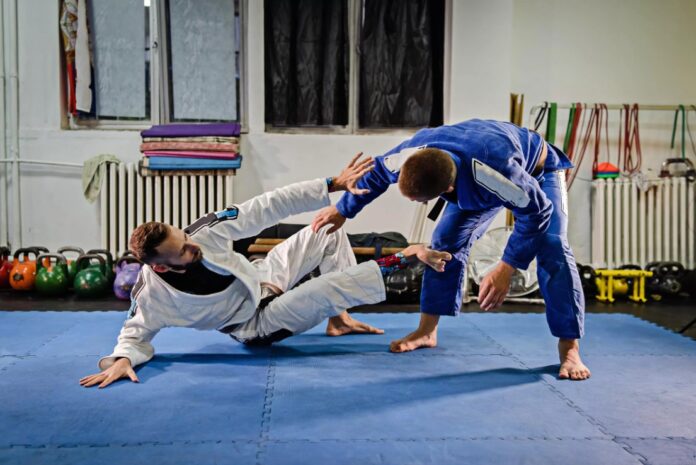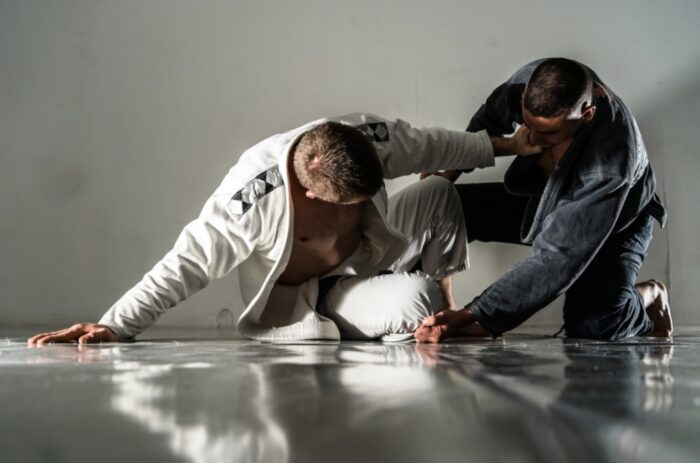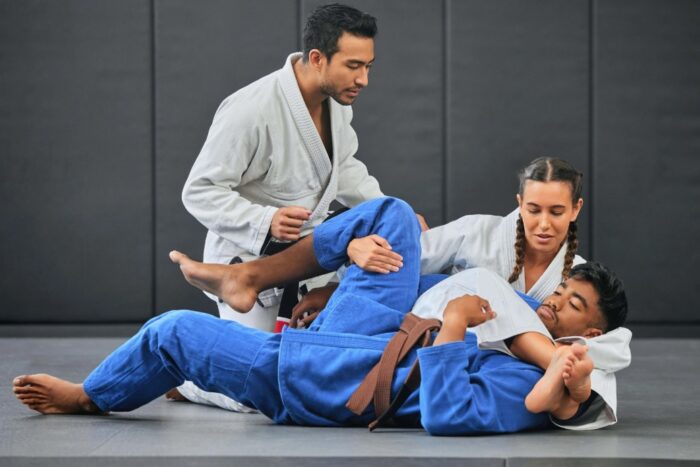
Jiu-Jitsu, a martial art known for its elaborate maneuvers and strategic ground battles, has surged in popularity over recent years. Originating from Japan and later changing in Brazil, it has intrigued many enthusiasts with its complex techniques that involve both mental and physical prowess. This diverse martial art, by its nature, showcases the beauty of motion and the sophistication of its application, leading it to be embraced worldwide in both recreational and competitive contexts.
This article aims to go beyond Jiu-Jitsu’s vivid motions and explore the mechanics that form its core – the science behind the art. It will provide an analysis of the physical, biological, and psychological aspects involved in Jiu-Jitsu while also deciphering the balance between art and scientific principles within its techniques.
History and Basics
Originated in feudal Japan, Jiu-Jitsu, which translates as ‘the gentle art’, prides itself in being a doctrine that uses an opponent’s force against them rather than relying on one’s strength. Historical records suggest that Jiu-Jitsu served as a means for Samurai warriors to subdue armed opponents without relying on weapons. Over hundreds of years, Jiu-Jitsu advanced through countless iterations and practices, each refining its artistry and efficacy. The modern form of Jiu-Jitsu, often referred to as Brazilian Jiu-Jitsu, was developed in the early 20th century, greatly influenced by the Gracie family, who emphasized on ground fighting and submission holds.
The basics of Jiu-Jitsu encompass a wide array of grappling techniques such as chokeholds, joint-locks, and control positions – each serving a unique purpose in immobilizing or subduing the opponent. Jiu-Jitsu techniques revolve around the principle of using leverage and momentum opposed to brute force – thus enabling a smaller, weaker individual to successfully defend against a larger, stronger attacker. Mastery of these techniques, which can be acquired at jiu jitsu San Diego, requires a well-rounded understanding of the biomechanical principles at work. This leads many to consider Jiu-Jitsu to be as much an intellectual exercise as it is a physical one.
The Physics
Leverage, a concept we see frequently in daily life, plays a major role in the execution of Jiu-Jitsu techniques. Practical usage of leverage in Jiu-Jitsu allows a practitioner to offset their opponent’s physical advantage, by applying force efficiently to multiply their strength. It is the principle that facilitates a smaller individual to perform a throw or a takedown on a much larger adversary. Leverage maximizes the effect of technique while minimizing the required strength.
Understanding the use of momentum and force in Jiu-Jitsu is key to grasping the way moves are executed. For instance, an understanding of how to control and shift your mass can enable you to move swiftly and effectively during rolling or in executing a technique. Jiu-Jitsu practitioners heavily depend on Newton’s third law of motion (for every action, there’s an equal and opposite reaction), to anticipate and manipulate the opponent’s movements. By understanding these principles, a practitioner turns their opponent’s strength against them, using their opponent’s force to their advantage.
The Biology

The biological aspects of Jiu-Jitsu involve the impact of this martial art on the human body, both in terms of physical and mental attributes. From a physical perspective, Jiu-Jitsu requires a considerable degree of strength, flexibility, and endurance. It employs a diverse set of muscles and articulations during maneuvers, focusing on core strength and stability. Flexibility and fluid movements allow practitioners to carry out a wide range of techniques, increasing their defensive and offensive capabilities. As an aerobic and anaerobic activity, Jiu-Jitsu also develops a practitioner’s cardiovascular endurance, improving overall physical fitness.
The mind-body connection is fundamental in Jiu-Jitsu. The efficiency of techniques heavily depends on understanding and responding to your body’s signals during a fight. Quick decision-making is key to strategizing the next move, while the ability to manage and channel your emotions can mean the difference between losing and maintaining control. The practice reinforces connection between neural pathways, increasing the overall cognitive functionality of the brain.
The Psychology
The psychological aspects of Jiu-Jitsu are as vital as the physical aspects. Strategy, patience, and discipline are inherent to its essence. Strategy comes into play when deciding which techniques and moves to employ and when. The application of a technique requires anticipation and understanding of an opponent’s actions, making Jiu-Jitsu mentally demanding. Jiu-Jitsu is often referred to as the ‘game of human chess‘ highlighting the constant decision making inherent in the art.
Stress and adrenaline are inevitable experiences during Jiu-Jitsu matches. Learning to manage adrenaline dump and the anxiety of combat is an important part of training. Over time, practitioners learn how to stay calm under pressure, a lesson that becomes invaluable even outside the dojo. Focused and disciplined practice of Jiu-Jitsu also offers mental benefits including improved self-confidence, resilience, focus, and problem-solving abilities.
The Arts and the Science

While the fundamental physics principles of force, momentum, and leverage explain how balance can be disrupted, the artistry lies in the elegance and creativity by which it’s executed. The way a practitioner fluidly transitions from one position to another, creates space, or anticipates an opponent’s response speaks volumes about their level of skill and finesse. These sequences of movements can have an aesthetic dimension, much like a dance, making Jiu-Jitsu a graceful and complex art.
Jiu-Jitsu exemplifies the application of scientific principles. The way a practitioner uses leverage to offset an opponent’s superior strength or how they manipulate forces to execute a throw represents the practical application of physics. The way techniques are created and developed to exploit an opponent’s weaknesses demonstrate the use of biology and anatomy. And the way a practitioner strategizes, remains patient, and regulates emotions under stress showcases the use of psychological principles.
Science is integral to every aspect of Jiu-Jitsu – from the physical maneuvers to the psychological strategizing. By approaching Jiu-Jitsu from a scientific perspective, not only can we appreciate the elegance of the sport but also enhance our performance and safety.








